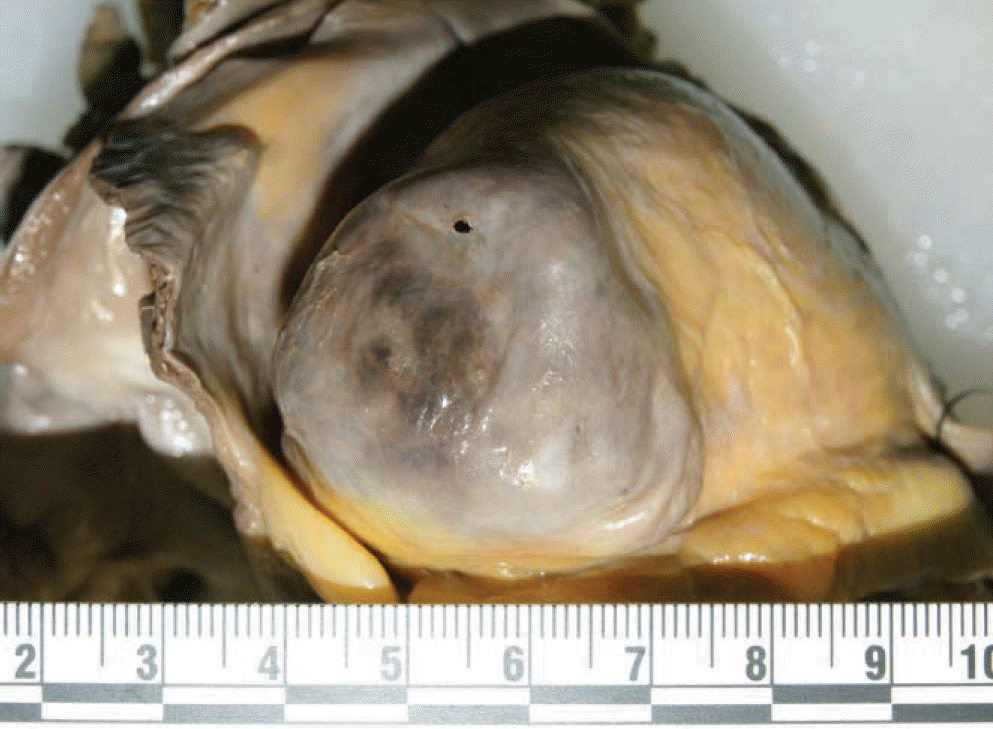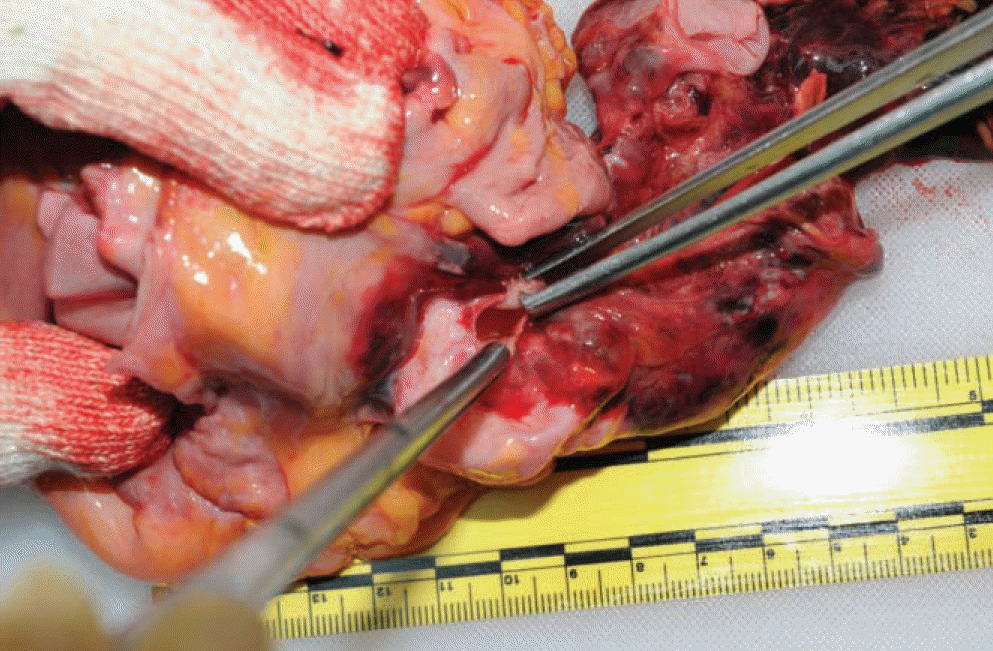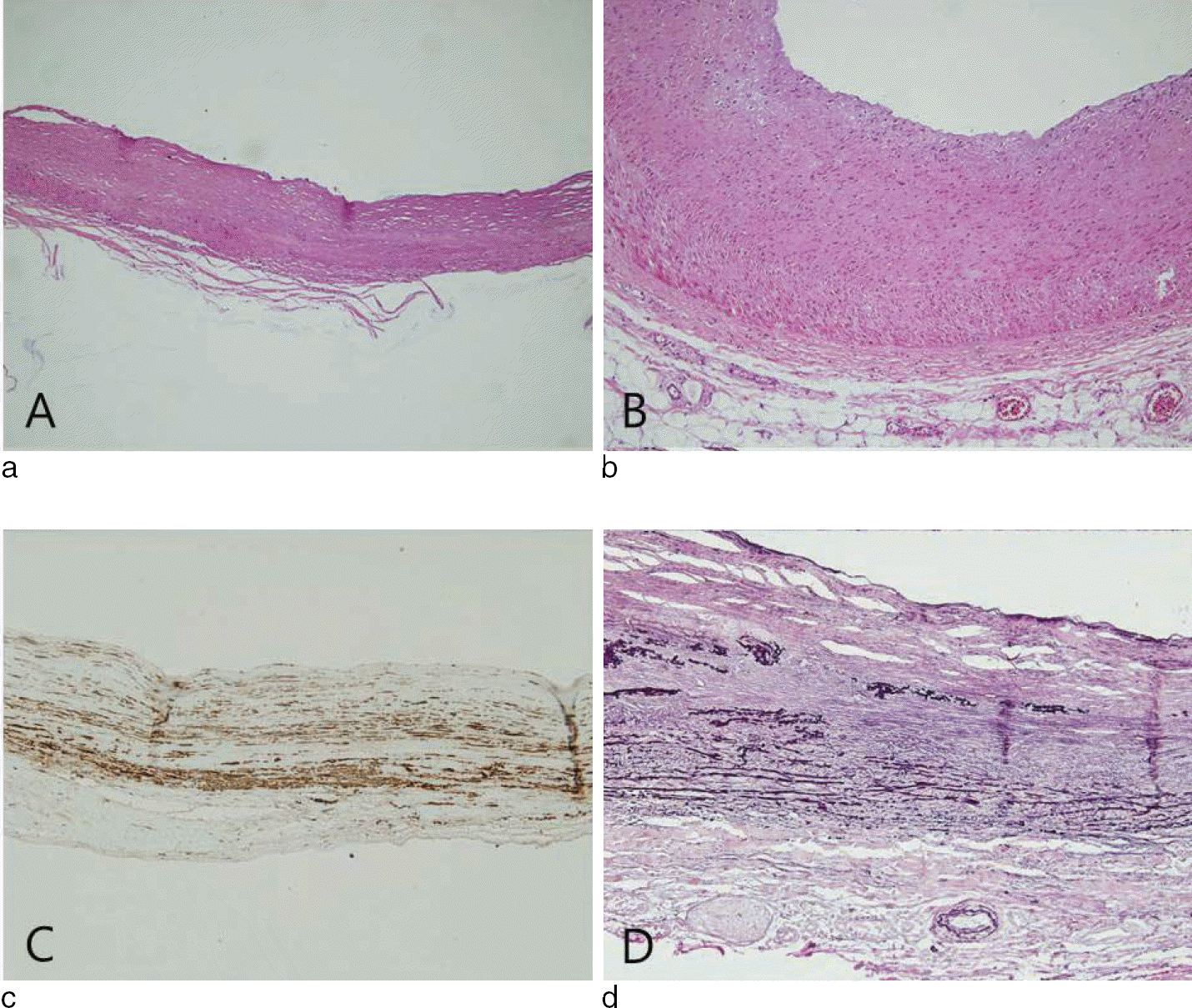Abstract
Thoracic aortic aneurysms are less common than abdominal aortic aneurysms, however they are life-threatening and usually asymptomatic until acute complications occur. The majority of thoracic aorta aneurysm are associated with medial degeneration rather than atherosclerosis and the fusiform aortic aneurysm is common. Considering that it usually occurs during the sixth and seventh decades of life, its occurrence in a peripartum woman is unusual. Aortic dissection or thoracic aortic aneurysm with aortic insufficiency during pregnancy or peripartum has been reported, however, to our knowledge, the case of ascending thoracic aortic aneurysm in peripartum women, with saccular type without aortic valve involvement but not diffuse dilatation, has not been reported. Herein, we presented two autopsy cases of ascending thoracic aortic aneurysm during postpartum.
Go to : 
REFERENCES
1. Hiratzka LF, Bakris GL, Beckman JA, et al. 2010 ACCF/A-HA/AATS/ACR/ASA/SCA/SCAI/SIR/STS/SVM guidelines for the diagnosis and management of patients with Thoracic Aortic Disease: a report of the American College of Cardiology Foundation/American Heart Association Task Force on Practice Guidelines, American Association for Thoracic Surgery, American College of Radiology, American Stroke Association, Society of Cardiovascular Anesthesiologists, Society for Cardiovascular Angiography and Interventions, Society of Interventional Radiology, Society of Thoracic Surgeons, and Society for Vascular Medicine. Circulation. 2010; 121:e266–369.
2. Bickerstaff LK, Pairolero PC, Hollier LH, et al. Thoracic aortic aneurysms: a population-based study. Surgery. 1982; 92:1103–8.
3. Conrad MF, Cambria RP. Contemporary management of descending thoracic and thoracoabdominal aortic aneurysms: endovascular versus open. Circulation. 2008; 117:841–52.

4. Burke A, Tavora F. Practical Cardiovascular Pathology. 1st ed.Philadelphia: Wolters Klluwer Health/Lippincott Williams & Wilkins;2011. p. 490–519.
5. Immer FF, Bansi AG, Immer-Bansi AS, et al. Aortic dissection in pregnancy: analysis of risk factors and outcome. Ann Thorac Surg. 2003; 76:309–14.

6. Ecknauer E, Schmidlin D, Jenni R, et al. Emergency repair of incidentally diagnosed ascending aortic aneurysm immediately after caesarean section. Br J Anaesth. 1999; 83:343–5.

7. Sheppard MN. Practical Cardiovascular Pathology. 2nd ed.London: Hodder Arnold;2011. p. 252–74.
8. Virmani R, Burke A, Farb A, et al. Cardiovascular Pathology. 2nd ed.Philadelphia: Saunders;2001. p. 486–8.
Go to : 
 | Fig. 1.The saccular type aneurysm with rupture is observed on the ascending aorta and aortic wall cut longitudinally showing true aneurysm (Case 1). |
 | Fig. 2.The ruptured aneurysm is identified on the ascending aorta, with localized mild atherosclerotic changes (Case 2). |
 | Fig. 3.The wall of the aneurysm is extremely thin (a: H & E, × 100) compared with normal aortic wall (b: H & E, × 100), but is composed of all 3 layer of vessel wall. Immunohistochemical staining for smooth muscle actin is positive for myofibroblast in media, which support the aneurysm is a true aneurysm (c: SMA, × 200). Special stain for elastic fiber shows disrupted elastic laminae (d: elastin, × 200). |




 PDF
PDF ePub
ePub Citation
Citation Print
Print


 XML Download
XML Download